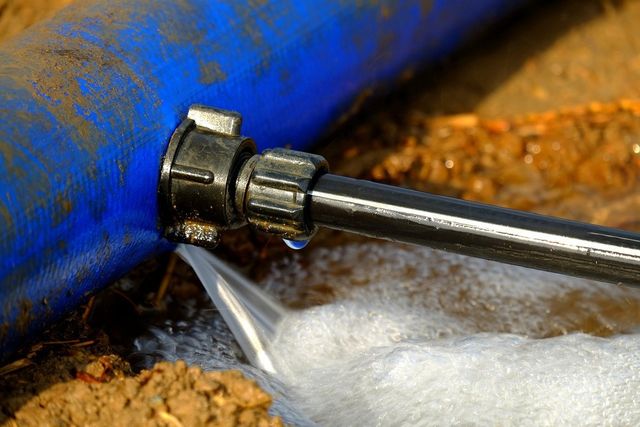We've unearthed this post relating to Locating water leaks listed below on the internet and concluded it made good sense to talk about it with you here.

Early detection of dripping water lines can reduce a possible disaster. Aside from conserving you cash, it will certainly reduce the irritation and also aggravation. The moment you locate a leakage, calling your plumber for repairs is the most effective service. Some little water leaks might not be noticeable. Here are some hacks that assist if you can not find it with your naked eyes.
1. Examine the Water Meter
Every house has a water meter. Inspecting it is a surefire manner in which assists you find leaks. For starters, switch off all the water sources. Ensure no person will flush, utilize the faucet, shower, run the washing device or dishwasher. From there, most likely to the meter as well as watch if it will certainly alter. Given that nobody is using it, there must be no movements. If it relocates, that indicates a fast-moving leakage. If you identify no adjustments, wait a hr or 2 and also inspect back again. This suggests you may have a slow leak that might even be underground.
2. Inspect Water Consumption
If you spot abrupt changes, in spite of your intake being the same, it means that you have leaks in your plumbing system. An unexpected spike in your expense suggests a fast-moving leak.
A consistent rise every month, also with the same behaviors, reveals you have a slow leak that's additionally gradually escalating. Call a plumber to extensively examine your residential property, particularly if you really feel a warm location on your flooring with piping underneath.
3. Do a Food Coloring Test
When it comes to water consumption, 30% comes from commodes. If the color in some way infiltrates your bowl throughout that time without flushing, there's a leakage between the container as well as dish.
4. Asses Outside Lines
Do not neglect to inspect your outside water lines as well. Ought to water leak out of the connection, you have a loose rubber gasket. One tiny leakage can throw away loads of water as well as spike your water bill.
5. Assess the circumstance as well as examine
House owners must make it a behavior to check under the sink counters and even inside cabinets for any type of bad odor or mold and mildew development. These two warnings indicate a leak so timely focus is required. Doing routine evaluations, even bi-annually, can conserve you from a major trouble.
More notably, if you recognize your house is currently old, keep a watchful eye on your heaters, hoses, pipelines and so on. Look for discolorations and deteriorating as most pipelines as well as devices have a life expectancy. They will certainly also naturally weaken because of wear and tear. If you think dripping water lines in your plumbing system, don't wait for it to rise. Call a professional plumber right now so you don't wind up with a terrible mess in your house.
Early discovery of leaking water lines can mitigate a prospective disaster. Some small water leakages may not be noticeable. Checking it is a proven way that aids you find leakages. One little leak can lose loads of water as well as increase your water expense.
If you think dripping water lines in your plumbing system, do not wait for it to escalate.
WARNING SIGNS OF WATER LEAKAGE BEHIND THE WALL
PERSISTENT MUSTY ODORS
As water slowly drips from a leaky pipe inside the wall, flooring and sheetrock stay damp and develop an odor similar to wet cardboard. It generates a musty smell that can help you find hidden leaks.
MOLD IN UNUSUAL AREAS
Mold usually grows in wet areas like kitchens, baths and laundry rooms. If you spot the stuff on walls or baseboards in other rooms of the house, it’s a good indicator of undetected water leaks.
STAINS THAT GROW
When mold thrives around a leaky pipe, it sometimes takes hold on the inside surface of the affected wall. A growing stain on otherwise clean sheetrock is often your sign of a hidden plumbing problem.
PEELING OR BUBBLING WALLPAPER / PAINT
This clue is easy to miss in rooms that don’t get much use. When you see wallpaper separating along seams or paint bubbling or flaking off the wall, blame sheetrock that stays wet because of an undetected leak.
BUCKLED CEILINGS AND STAINED FLOORS
If ceilings or floors in bathrooms, kitchens or laundry areas develop structural problems, don’t rule out constant damp inside the walls. Wet sheetrock can affect adjacent framing, flooring and ceilings.
https://www.servicemasterbyzaba.com/blog/how-to-detect-water-leakage-in-walls/

We hope you liked our piece about Detecting hidden plumbing leaks. Thanks a ton for taking time to read through our post. Are you aware of another individual who is interested in the topic? Feel free to promote it. Thank-you for going through it.
Comments on “How to Inspect If Your Home Has a Concealed Leakage”